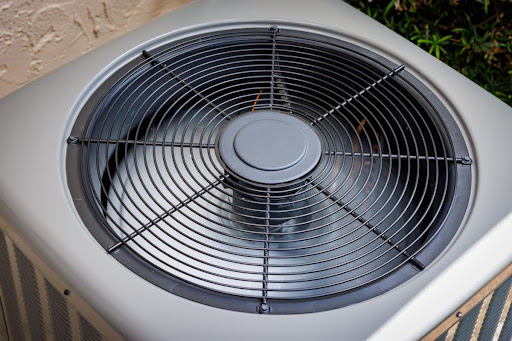Today’s HVAC market offers a stunning array of systems to fit your home’s needs. Looking for powerfully cool air during those scorching summer days? You’ll find units that can chill your entire home in minutes. Want efficient heating that won’t drain your wallet? Several versatile and unique options exist that maximize output while minimizing energy use.
To find that perfect balance between performance and efficiency, you’ll need to consider your SEER rating. This critical number helps you determine how efficiently your system operates and can make all the difference in your home comfort and monthly bills. We’ll look at what SEER ratings mean in 2025 and how they can guide your next HVAC purchase.
What Is a SEER Rating and Why Does It Matter?
SEER stands for Seasonal Energy Efficiency Ratio — a measurement that calculates how efficiently your air conditioning system operates throughout an entire cooling season. It’s similar to your car’s miles-per-gallon rating but for your air conditioner. The higher the SEER number, the more efficient the unit becomes at converting electricity into cooling power.
In practical terms, your SEER rating directly impacts your utility bills. A system with a higher rating uses less electricity to cool your home compared to a lower-rated unit. For example, upgrading from a SEER 14 to a SEER 18 system could reduce your cooling costs by up to 20-25%, depending on your climate and usage patterns.
The rating is calculated by dividing the total cooling output (measured in British thermal units) by the total electricity consumed (measured in watt-hours) during a typical cooling season. This ratio gives HVAC professionals and homeowners a standardized way to compare different systems’ efficiencies.
SEER2: A New Standard Used in 2025
In 2025, you’ll increasingly hear HVAC technicians talking about SEER2 rather than the traditional SEER rating. This updated measurement system was introduced by the Department of Energy to more accurately reflect real-world conditions and provide homeowners with better information about actual energy consumption.
SEER2 uses more stringent testing procedures that account for factors like static pressure in ductwork, which the original SEER testing didn’t fully consider. This means SEER2 ratings typically come in slightly lower than their SEER counterparts — a system with a 16 SEER rating might have a 15.2 SEER2 rating. Don’t worry, though! This doesn’t mean newer systems are less efficient; it just reflects a more accurate measurement methodology.
The shift to SEER2 also comes with updated minimum efficiency standards. As of 2025, the minimum SEER2 rating for new residential air conditioners varies by region:
- Northern states: 13.4 SEER2 minimum
- Southeastern states: 14.3 SEER2 minimum
- Southwestern states: 14.3 SEER2 minimum
These regulations help drive innovation in the industry while reducing environmental impact and saving you money on electricity costs over time.
How Cooling Stages Affect Your SEER Rating
Cooling stages play a major role in determining SEER rating and overall efficiency. The more cooling stages, the more efficient the system.
Single-stage compressors operate at 100% capacity whenever they run. While these systems typically have lower SEER ratings, they cost less upfront and work well in extreme climates where full cooling power is frequently needed.
Two-stage compressors can operate at two levels: low (usually around 65% capacity) and high (100% capacity). This flexibility allows the system to run at the lower stage most of the time, consuming less energy and maintaining more consistent temperature levels.
Variable-speed compressors are the pinnacle of cooling technology. These sophisticated units can adjust their output incrementally to precisely match your home’s cooling needs. By running continuously at lower speeds rather than cycling on and off, they maintain perfect temperature control while maximizing energy efficiency.
Factors to Consider When Evaluating SEER Ratings
Choosing the right SEER rating involves balancing several key considerations. No single SEER rating works best for everyone, as your optimal choice depends on:
- Your local climate: Higher SEER ratings yield greater benefits in hot, humid regions with longer cooling seasons. In moderate climates, you probably don’t need a high-SEER system.
- Home size and layout: Larger homes or those with complex layouts may benefit from higher-efficiency systems that can handle variable loads more effectively.
- Budget constraints: Higher SEER systems cost more upfront but save more over time. Your budget might determine where you land on this spectrum.
- Expected occupancy duration: Planning to stay in your home for 10+ years? The long-term savings from a high-SEER system will likely justify the higher initial investment.
- Local utility rates: Areas with high electricity costs make the case for higher-efficiency systems much stronger.
- Available tax credits: Energy Star-certified systems with higher SEER ratings often qualify for federal or local tax incentives that can offset their higher purchase price.
Finding the Right Balance Between Energy Efficiency and Cost
Your HVAC system is one of the largest home improvement investments you’ll make, with significant implications for both comfort and long-term operating costs. Finding the right balance requires looking beyond just the SEER2 number.
The initial cost difference between a 16 SEER (15.2 SEER2) and a 20 SEER (19.0 SEER2) system might range from $1,500-3,000 for a typical residential installation. Will you recoup this investment? The math depends on your usage patterns, local electricity rates, and how long you plan to keep the system.
As a general rule, higher SEER systems make more financial sense when:
- You live in a climate that demands frequent air conditioning use.
- Your electricity costs more than the national average.
- You plan to stay in your home for at least 7-10 years.
- Your existing system has a very low SEER rating (14 or below).
Take Your Home Comfort to the Next Level
SEER ratings give you a powerful tool for comparing HVAC systems and making smart energy choices. And with the new SEER2 standards in place, you can more accurately gauge how a system will perform in real-world conditions.
Service Plus can help you find an efficient cooling and heating system with the optimal SEER rating for your specific home and lifestyle. We’ll help you properly size your system to maximize both comfort and efficiency. We also provide ductless systems that offer zone-by-zone temperature control with excellent SEER ratings. Call us today for a detailed breakdown of what works best for you!
 Skip to content
Skip to content


